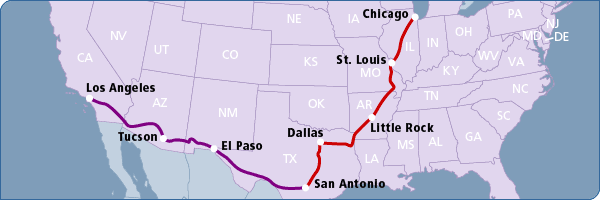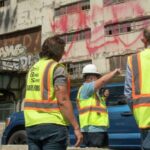Amtrak Gives More Bang for the Taxpayer Buck!
I’m always surprised by how many people think that Amtrak ought to operate at a profit and are incredulous when I tell them that all public transportation is subsidized, even—in fact, especially—the airlines.
First, sez I, there are the indirect subsidies…meaning when government picks up the tab for something that the airlines must have to operate. The air traffic control system, for instance. And airports, which are built and maintained by municipal or state governments.
But wait—as they say on TV—there’s more!
The federal government funds two programs that provide direct subsidies to ensure that hundreds of small cities and towns all across the country have air service: the Small Community Air Service and Essential Air Service programs. And how do these programs compare with the annual subsidy Amtrak gets?
In 2014, Amtrak carried roughly 30 million passengers … and received $775 million in taxpayer funds to do it … Amtrak serves 475 rural communities at a cost of about $1.6 million per rural community served. [That’s a] $25.83 subsidy per Amtrak passenger. The EAS program carried 613,191 passengers to and from 125 rural communities aboard a polyglot mix of regional carriers and contractors flying under major airlines’ liveries. U.S. taxpayers covered $232 million for those 125 communities… $378.00 for every passenger flown.
That paragraph was lifted (with permission) from an email sent by NARP* president and CEO, Jim Mathews, to a number of us who were engaged in an electronic bull session yesterday.

Mathews goes on to note that obviously flying is the fastest way to travel from, for instance, Chicago to Los Angeles, but he points out that Amtrak’s Texas Eagle, which operates daily between those same two cities by way of Dallas and San Antonio, “can serve 756 city-pair combinations on any given run.”
Now that’s public transportation!



For a classic example of what’s wrong with the Feds silo approach to transportation funding that has created EAS, just look at Illinois. As part of the approximate $7M per year EAS subsidy just in Illinois, almost $2.7M is spent annually to subsidize air service to Chicago from Decatur, IL. However, Decatur is but 40 miles from the Springfield, IL airport.
If the market is not there for the airlines to invest service, why should our taxes be spent subsidizing air service that is not self-supporting?
Perfect example. Here on Maui, we live about 25 miles from the airport and don’t think anything of driving that distance. Decatur is about 180-190 miles from Chicago. Surely better to drive the 40 miles to Springfield and end up in downtown Chicago instead of out at O’Hare facing an additional $30-$40 cab ride.
Indeed, outside of Alaska, many of the tax-subsidized EAS airports are in towns “just down the road” from a larger airport, (e.g., Lancaster, PA 36 minutes to Harrisburg; Pueblo, CO 45 minutes to Colorado Springs) or, situated on active daily Amtrak passenger lines (e.g., Merced, CA; Kingman, AZ; Burlington, IA; Quincy, IL (2 trains daily!).
Curious how much of the approximate $275M annual EAS cost is for airports located in congressional districts and states of our alleged “free-market” politicians..?